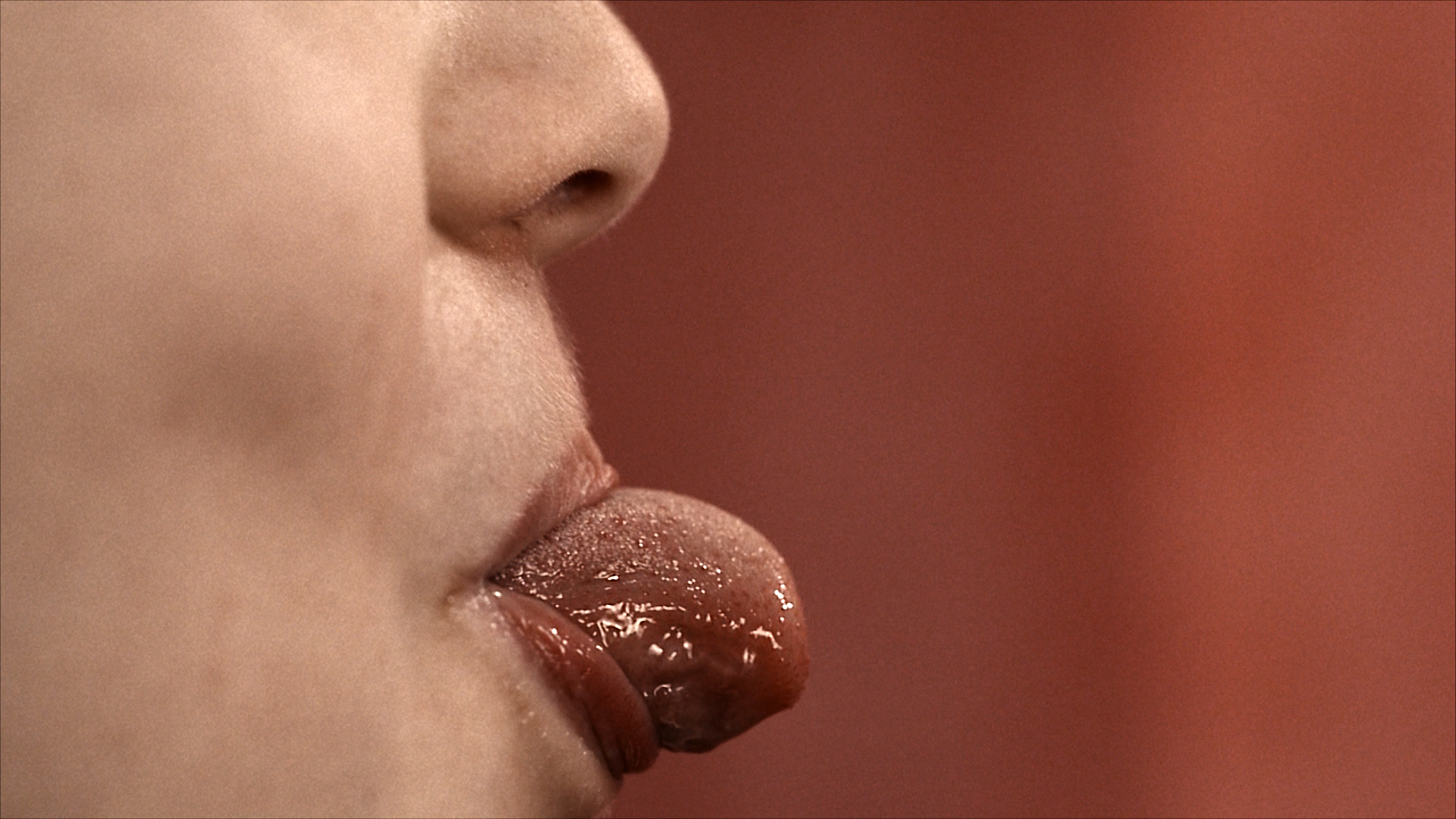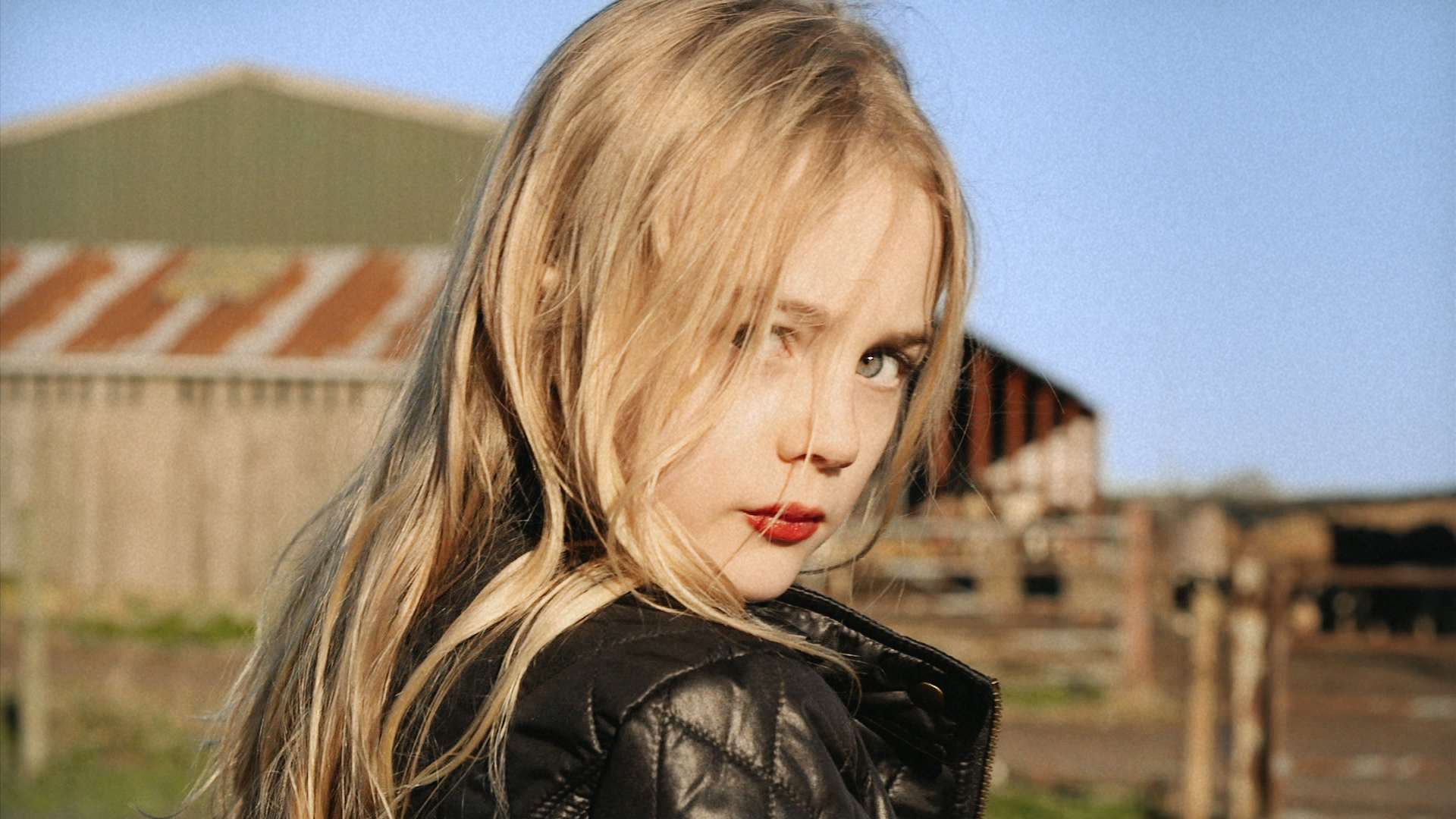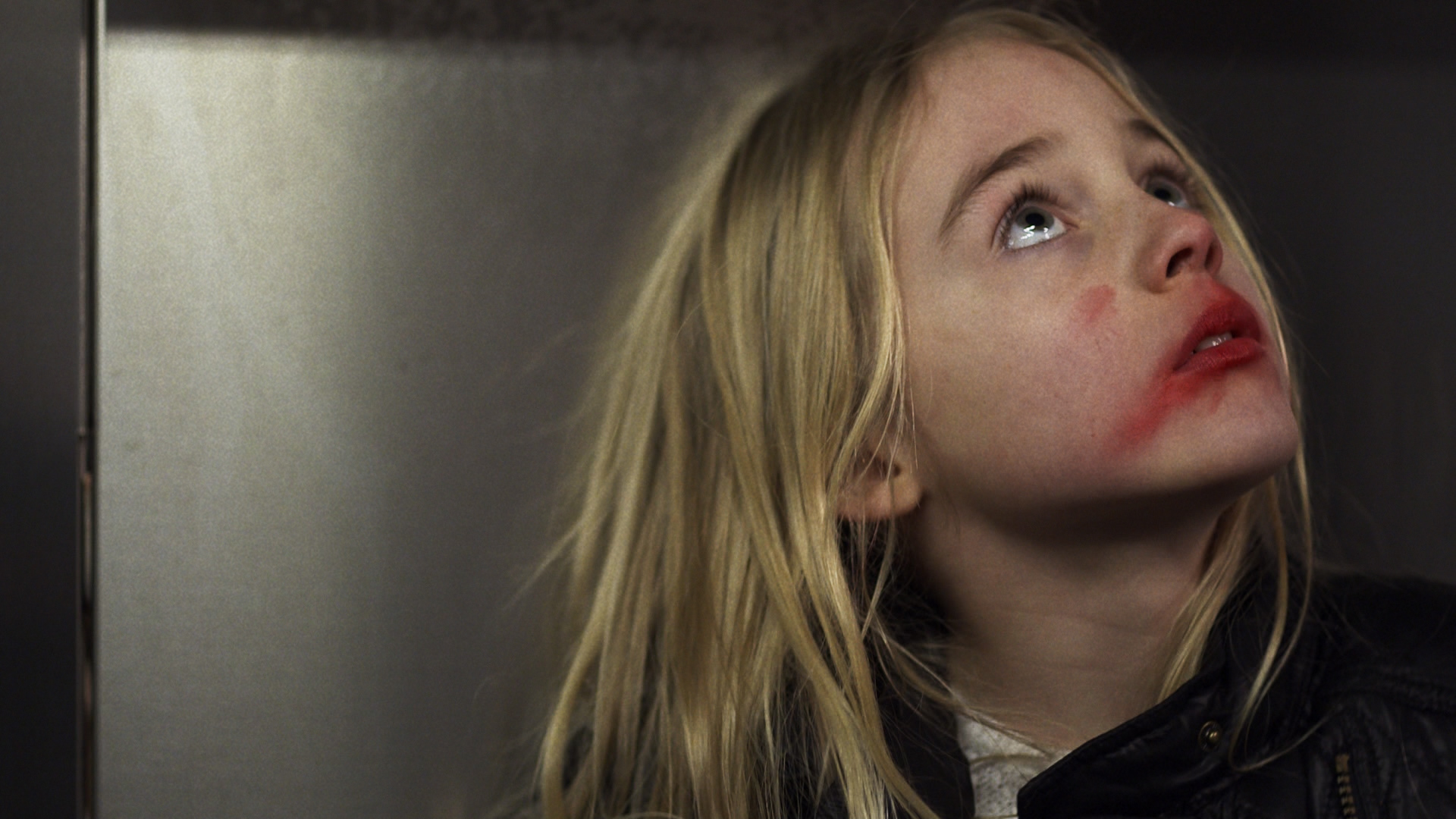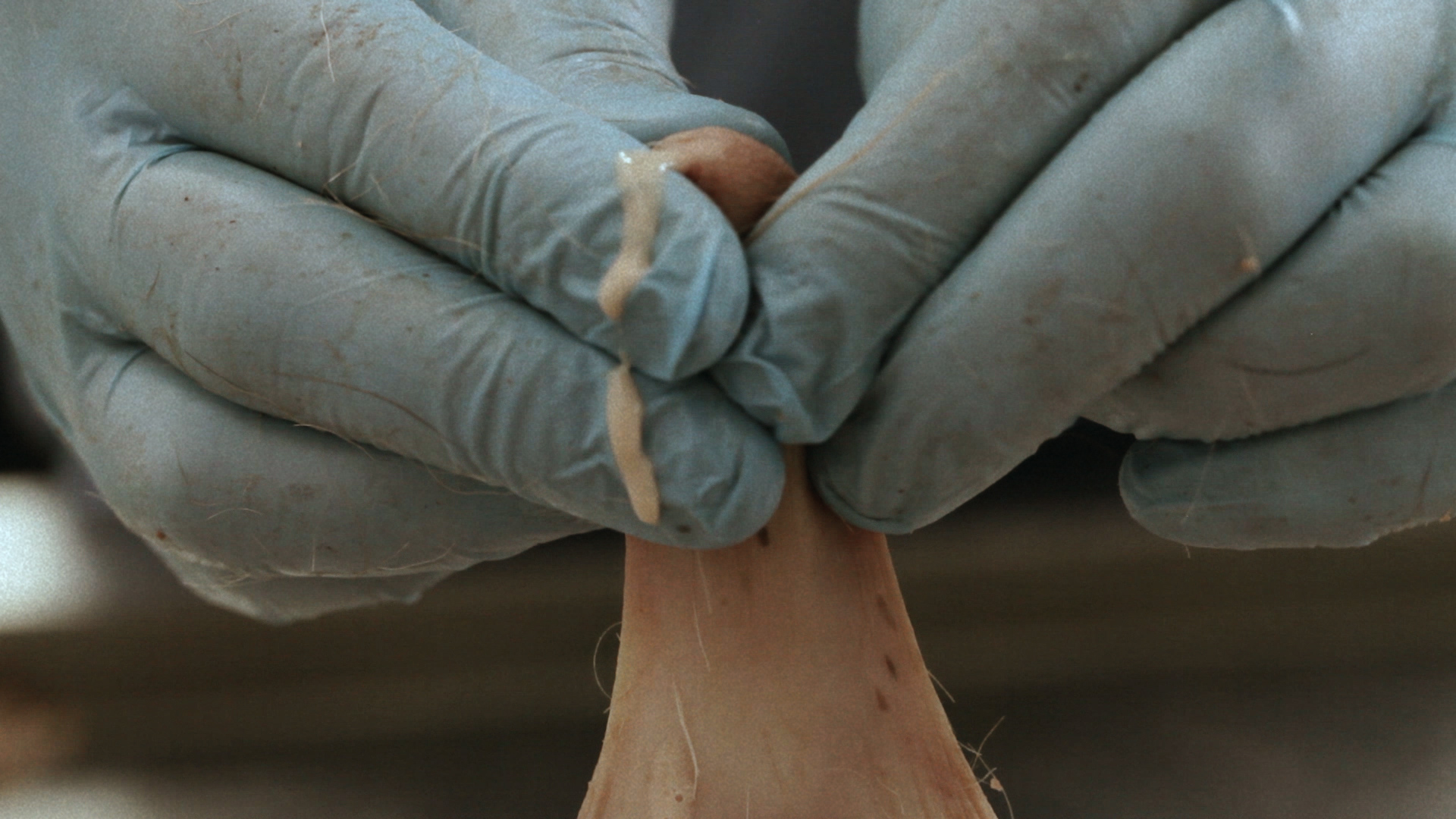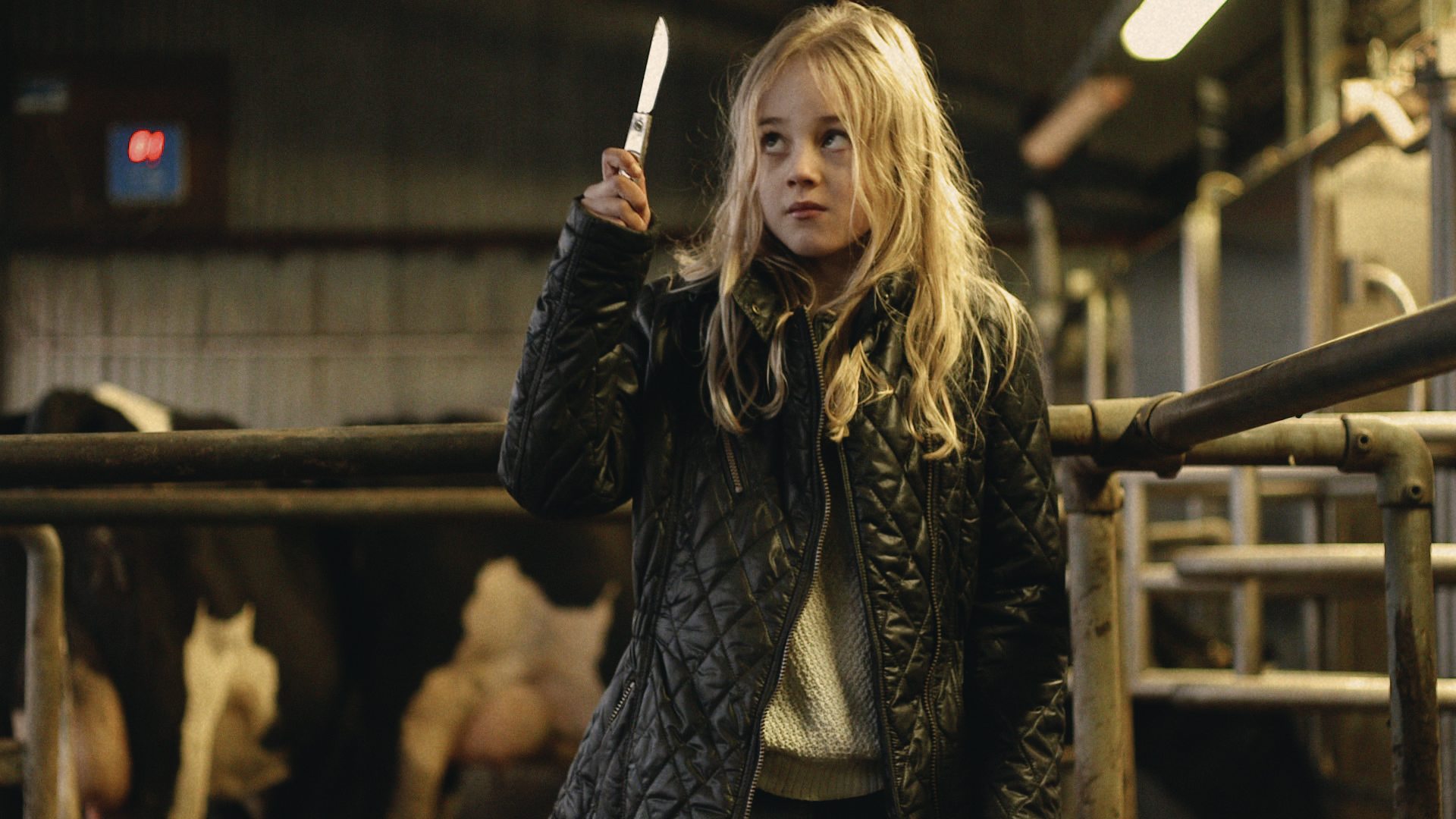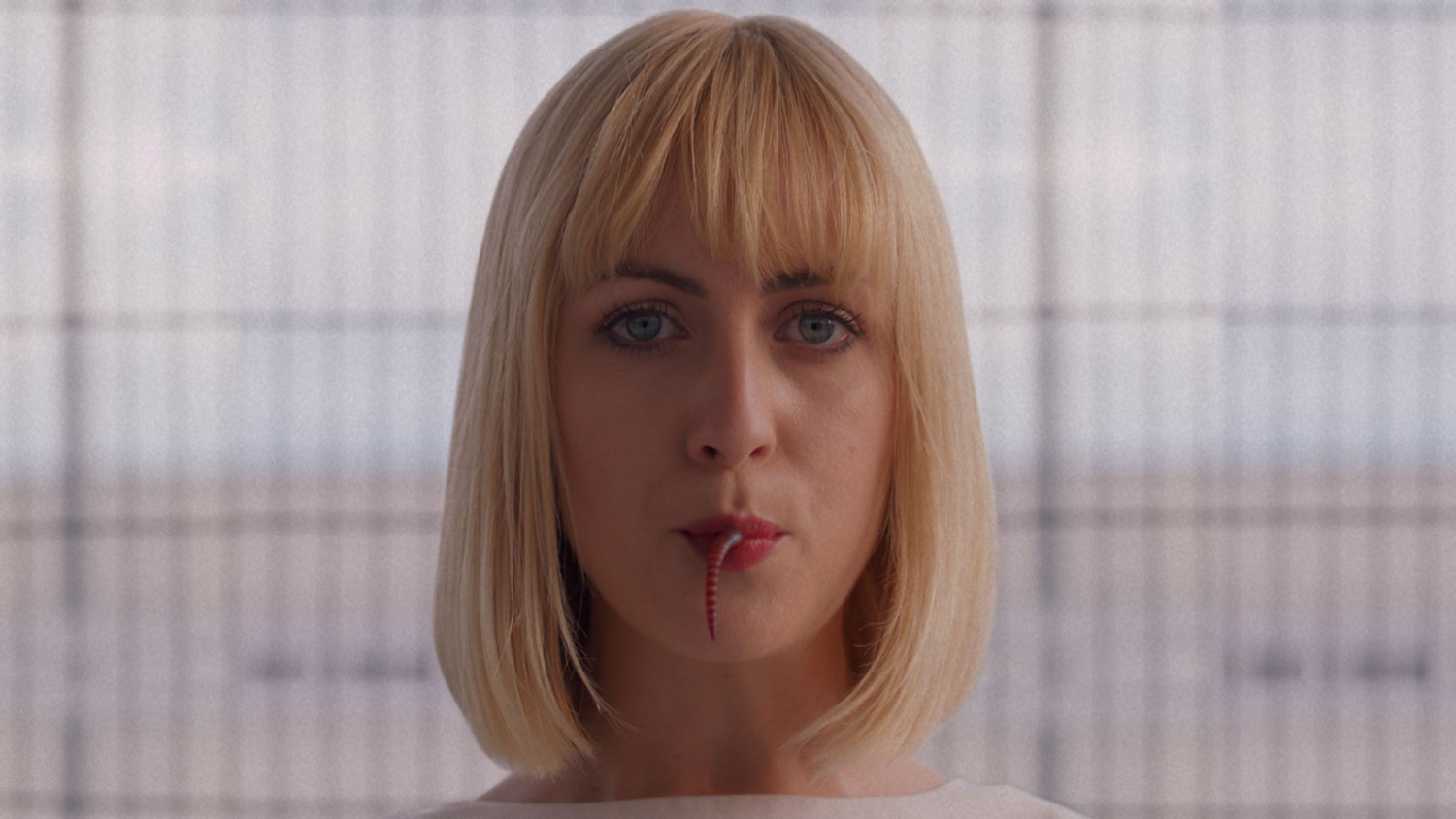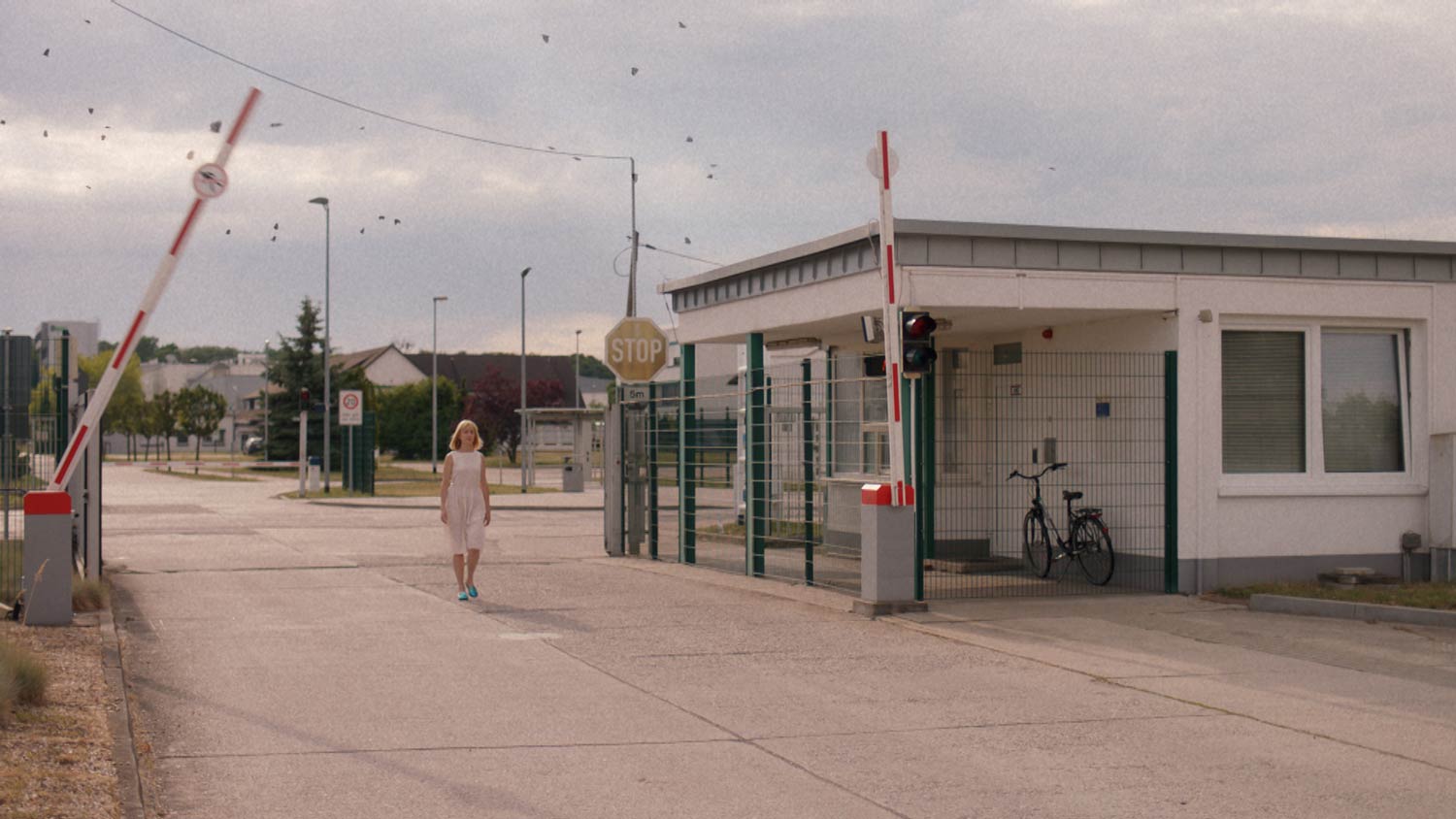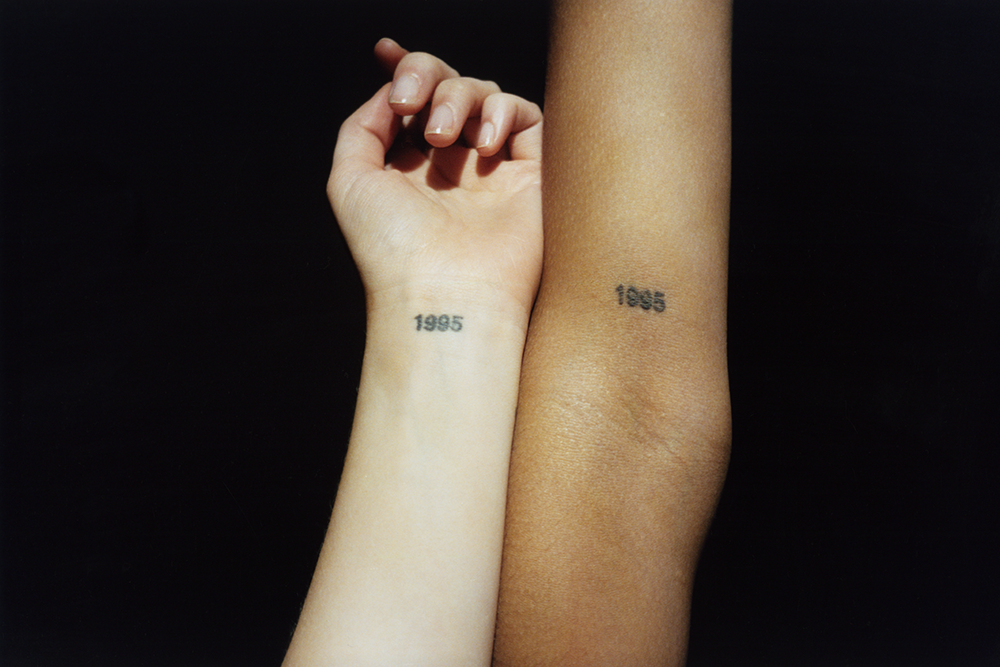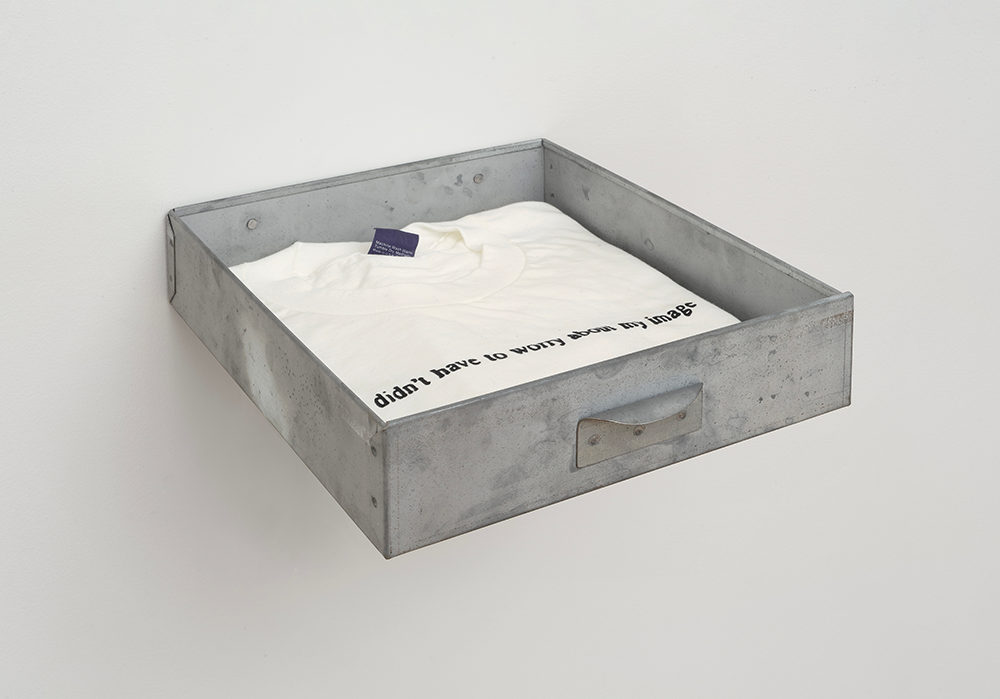In her legendary 1991 essay “The Cyborg Manifesto,” Donna Haraway described a world that many of us then dismissed as science fiction. “Late twentieth-century machines,” she declared, “have made thoroughly ambiguous the difference between natural and artificial, mind and body, self-developing and externally designed.” Her conclusion that “our machines are disturbingly lively, and we ourselves frighteningly inert”1 seemed particularly fantastical. And yet as the film- and sound-based works of Marianna Simnett eerily reveal, in the face of robotics, artificial intelligence, and neurotechnology, that prescient diagnosis is now undeniable. Virtual reality and digital life have made embodied experience less and less relevant.
Merging the mythic structure of fables with the clinical aesthetics of medical documentaries, Simnett’s films tell nonlinear tales of bodily dread in which themes of contamination, disease, and violation combine with those of sexuality, identity, and metamorphosis. At the heart of these jarring, surrealist visions, in which, in the artist’s words, “Everyone is always becoming something other than themselves,” are issues of vulnerability, autonomy, and control. If not for a certain paradoxical playfulness that undercuts the dread, viewers might find them too gory.
Trained in musical theater, the British artist has a beautiful voice, and the ditties she writes and sings together with the non-actors who populate her films — children, farmers, doctors, scientists — inject their dark narratives with a dose of whimsy. In Blue Roses (2015), for example, which oscillates between a fictional varicose vein operation (on the back of a knee) and the real lab creation of a cyborg cockroach, dry recitations of both procedures turn into songs with catchy lyrics: “Perfect steering, perfect engineering,” the lab students and their teacher croon, “I brought you up to be better than you were originally.” Simnett, hanging upside down, laments in reply, “And they keep returning, the veins that I complain about hurting.”
When I first saw Blue Roses, I was reminded of a Gina Pane performance, Death Control (1974), in which the artist lay on the floor, her body crawling with live maggots, as a group of children sang “Happy Birthday” to her. Both works employed the forensic and macabre to elicit a visceral reaction from viewers: “a real experience,” as Pane put it; “to feel alive, woken up,” as Simnett has said. But it was Simnett’s vision of bulging veins, made through special effects to look like writhing maggots trapped under the skin, that made me think of Pane’s work. And the analogy overall is more than visual.
Pane, born in 1939, came of age in the 1960s, an era much like our own, when protest and violence, amid the dehumanizing, dissociative effects of mediated reality, led many artists to confront audiences with their voyeuristic detachment. Exploring the limits of the body as a pioneering female endurance artist, Pane became infamous for extreme “actions”: cutting her skin with razor blades (Psyche, 1974); lying on a metal bed frame over burning candles (The Conditioning, 1973); force-feeding herself raw meat under a blinding light while watching the nightly news (Nourriture-actualités télévisées-feu, 1971).
Simnett has similarly subjected herself to physical duress in her films, forcing herself to repeatedly faint through hyperventilation (Faint with Light, 2012) and submitting herself to vocal cord surgery to lower her voice (The Needle and The Larynx, 2016). She too has sought to connect her audience to the body’s inherent vulnerability, and, as with Pane, the resulting sense of empathy among her viewers, or lack thereof, is as intrinsic to the work as the horror that activates it. That said, whereas Death Control offers up a body that is whole and organic, Simnett conjures one that is fragmented and alien. The phantom-like leg featured in Blue Roses is cut off from the body and given its own consciousness (“You’re getting worse, veins,” it says at one point).
The psychoanalytic theories that informed the body-based performance work of Pane and other women artists of the 1970s (Valie Export, Marina Abramović, Orlan, etc.) underscore Simnett’s films as well, particularly those of Lacan and his phallocentric notion of the female body as lacking and other. The iconography in The Udder (2014), a film shot on a robotic dairy farm, is particularly rife with such associations. Toggling between a clinical account of bovine mastitis, a common yet painful disease, and a cautionary tale about female chastity, it is the first in a trilogy of works that includes Blue Roses and Blood (both 2015).
Tellingly, throughout the film, the eponymous udder is presented as a phallic appendage, disconnected from its body, and shown only in close-up. Such shots are intercut with those that reimagine its segmented interior — via scrims of crimson gauze — as a theatrical set: home to the pubescent Isabel, the film’s other protagonist, and her family. We see a blonde, blue-eyed girl, who recalls a young Simnett, move about this ethereal realm as her mother washes windows and her two younger brothers roughhouse. Despite being told by her mother that she’s “too pretty to go outside” lest she “entice the corruptor, the abuser,” she defiantly tests her virtue by leaving home.
Dressed in galoshes and a black leather coat, she walks along the muddy tractor-ridden tracks of the farm outside, encountering the deaf herdsman who oversees the farm and a seductive doppelgänger who represents her future sexual self (“You look ravishing,” the latter tells her). As the deaf farmer and mother recite the mechanics of robotic milking, and the nature of chastity, highlighting the threat accompanying both, Isabel’s menacing brothers plot to cut her into “a million bits.” When an alarm goes off in the cowshed to signal a threat of contamination, the farmer saves the day with a mysterious “miracle treatment.” The film concludes with Isabel imploring him, “Please make me clean,” to which he replies, “It is done, be made clean.”
The cost of such purity is high, however, symbolized by the gleaming scalpel that Isabel wields over her nose — a reference to both Freud’s theory connecting the nose to genitalia, and to the ninth-century nun, St. Ebba, who cut off her nose to avoid being raped by Vikings. While the implied self-mutilation is never physically enacted, the violence is transposed onto the udder, which we see cut open in grotesque detail. Still, in a paradoxical twist that Simnett seems to favor, red lipstick is repeatedly applied and smeared across Isabel’s mouth and that of her doppelgänger, corrupting the archetype of girlhood innocence if not the girl herself.
In Blood, the final work in Simnett’s trilogy, Isabel travels from the Udder to Albania with Diana, one of the last “sworn virgins” of the Balkans, also known as burrnesha. The oath of celibacy Diana has taken is part of a tradition that enables women to escape the restrictive life allotted their gender by living as men. “A woman is a sack made to endure,” Diana tells a questioning Isabel. Intercutting scenes of the two as they visit Diana’s rustic village in the Albanian mountains with the surgical removal of two turbinate bones in Isabel’s nose, Simnett merges their fates through the specter of self-sacrifice or martyrdom. The nose, like the udder, is made into a theatrical set: a giant papier-mâché version that the turbinate bones, personified by two little girls, gnaw at and harass with a form of parasitism that is distinctly Freudian.
Simnett’s focus on the dystopic consequences of technology through a psychosexual lens reaches its apex in the five-channel installation Blood in My Milk (2018). The seventy-three-minute-long film sequentially merges (newly edited) footage from her trilogy with the film Worst Gift (2017), a reprisal of The Needle and The Larynx. The latter follows an unruly gang of pubescent boys (think Lord of the Flies) forced to undergo vocal cord surgery in a rank hospital by a doctor who denies a willing female (played by Simnett) the same Botox procedure. “If you don’t make my voice low,” she warns him as ominous music plays, “I’ll tell the boys to sing, and when they sing the sun will shine so brightly you’ll never see a neck again.” When he refuses again, the boys enter, singing, and she joins their chorus under a theatrical spotlight, crooning, “Take a little bit of girl, dress her like a sick rose, add some tears to her eyes, make her cry for a dose.” To which the boys sing back: “Keep her dying for a dose.”
In the hallucinogenic way Simnett has of switching scenes like states of consciousness, the film cuts to her walking through tall grass outside a medical facility. Rebuffed again by a man who acts as gatekeeper, she tells him, “If you don’t let me through, I’ll tell all the birds to sing, and when they sing, your dick will become so hard that the birds will think it’s a seed stick for eating.” Standing in front of a white-curtained window, she regurgitates a red squiggling worm as the screen goes black to the sound of road traffic and keening seagulls. Finding her way again, she enters the gate of a factory, where she watches in great fascination as conveyor belts under flashing red lights deliver glass vials filled with Botox — the magical liquid she seeks.
Blood in My Milk, which includes never-before-seen material, sutures together the stories of Simnett’s various characters, and their multivalent, often contrary symbolism, in a metanarrative that recalls the genre of body horror made popular by the likes of H. P. Lovecraft, J. G. Ballard, and David Cronenberg. Dominated by clinical scenes of bodily mutilation, disfigurement, and invasion, it enacts the loss of bodily integrity, particularly for women, wrought by a medical system that still pathologizes female sexuality.
As with all her films, medical paraphernalia and surgical gore remain tethered to fairy-tale tropes of puberty and transformation. Catchy tunes meet “horror-zones” — the name she gives her body parts-cum-protagonists — in a universe where dread and uncertainty prevail along with the paradoxical promise of metamorphosis. “Transformation is through and through my work, Simnett explains in a recent interview. “Everyone is always becoming something other than themselves.”2
In a #MeToo era alternately described as post-human and anthropocene, it is a powerful, if ambivalent, message.
In the end, amid the madness that her glitch-like worlds create with their bizarre juxtapositions and obtuse threads, she makes real the specter of Haraway’s cyborgian claim that “we are all chimeras, theorized and fabricated hybrids of machine and organism”; the contested space of nature, like that of virtue, is rewired, made vulnerable, and put back together again with a singular vision that she alone theorizes and fabricates.

